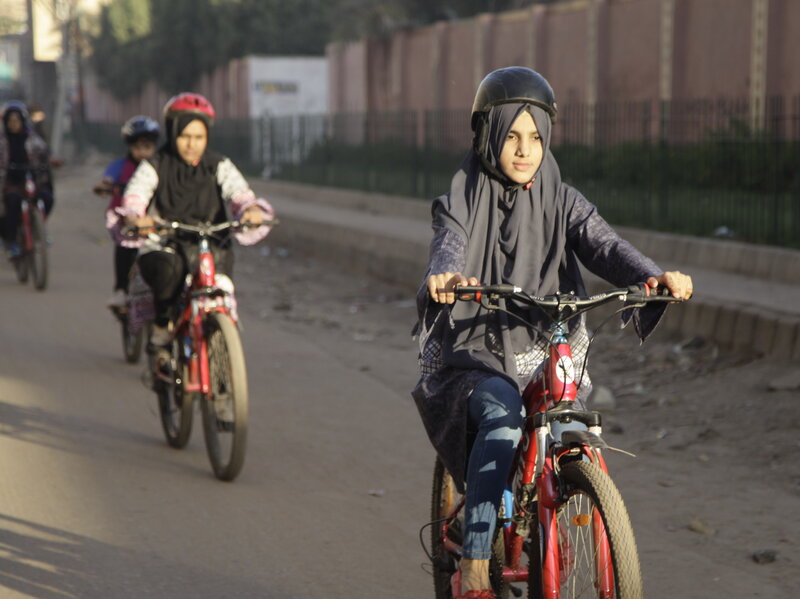According to the stats for this blog, most of you, my dear readers, live in what policy-makers call "advanced" economies with relatively stable political systems. Thus, I would surmise, many, if not most, of you are cycling by choice. You know that it's good for your health. Or you're trying to reduce your carbon footprint, or simply your energy bills. Pedaling to work or school may be more convenient than other forms of transportation, especially if you live in a large city or don't have to commute long distances. Finally, you might be riding just because you enjoy it.
There is at least one place where, for understandable reasons, I have few, if any readers. One of those reasons has to do with access to Internet content: Whether or not its rulers have restricted it through censorship and other forms of subterfuge, as has been rumored, many people simply have no way to connect. That has to do with a second reason: poverty. Not only do many people not have the means to pay for access, the ways they use bikes--if they have access to them--are very different from what I often discuss. And, finally, I suspect that the authorities might block or scramble this blog, not only because of some of the opinions (some not bike-related) I express, but because of who I am.
In that locale, some might be pedaling for their health, though I suspect that, relative to the United States, few are fighting "the battle of the bulge" and its attendant diseases like diabetes. I doubt many are riding for environmental reasons, not because the people aren't conscious of climate change, but because their carbon emissions, currently and historically, barely register at all. And I don't think they're cycling to work, school or the market as an "alternative" form of transportation because, really, there aren't many alternatives for them.
So what place am I talking about? It's literally on the other side of the world--socially and economically, as well as geographically--from where I am. That place is the capital of one of the world's more remote countries: Afghanistan. Whether or not it was their intention, the Taliban have loosed a surge of bicycles on Kabul's streets.
Over the past thirteen months, since the Taliban took control of the nation, sanctions have seized up banking and trade. At the same time, aid from Western countries has disappeared. As if those things weren't bad enough, Putin's invasion of the Ukraine have sent fuel prices skyward. Owning and driving a private car was prohibitively expensive for most residents even in the best of times. Now it's all but impossible, and the dire economic situation has put bus and shared taxi rides out of reach for many.
 |
| Photo by Diaa Hadid |
So, workers and students have taken to cycling and bike shops are popping up all over the city. While they, and the more established shops, may have new bikes for sale, most people buy used bikes or fix up old ones, not only because they are less expensive, but the condition of many streets and roads ensures that new bikes won't look that way for long.
While some may return to taking buses or cabs if the economy and their incomes recover, some say they enjoy riding and have found other unanticipated benefits. Ahmad Fahim, a 25-year-old radiologist, observed that in addition to weaving through traffic, his bike "gets me through Taliban checkpoints" where motor vehicles are typically stopped and searched.
There is one dark side to this new Afghan bike boom. It, too, was sparked--if not directly, then almost certainly intentionally--by Taliban rule. If you know anything about the Taliban's fundamentalist Islamic beliefs, you might have guessed it: The cyclists are all of one gender.
The Taliban doesn't explicitly forbid women from cycling. It doesn't have to. It simply tells women to stay home and, if they step outside, to cover up and be in the presence of a male guardian. Those edicts effectively ended the mini-bike boom Shannon Galpin helped to create among Afghan women for more than a decade. She recalls, "It was like popcorn. It just took off." There were women's bike clubs and teams, and even a coed multi-day race in the relatively liberal province of Bamiyan.
When the Taliban took power, Galpin helped dozens of female cyclists flee the country. The ones who couldn't now watch, with sadness, depression and anger, male cyclists. "When you see men can do that and you can't do that, it feels like injustice," laments a woman who asked that her name not be used because she's seeking asylum in the US.
It's a sad irony that she has to seek a new life in an unfamiliar country to enjoy something the Taliban have enabled in her own. I hope she finds the refuge she seeks--and that she continues to cycle, by choice.





















